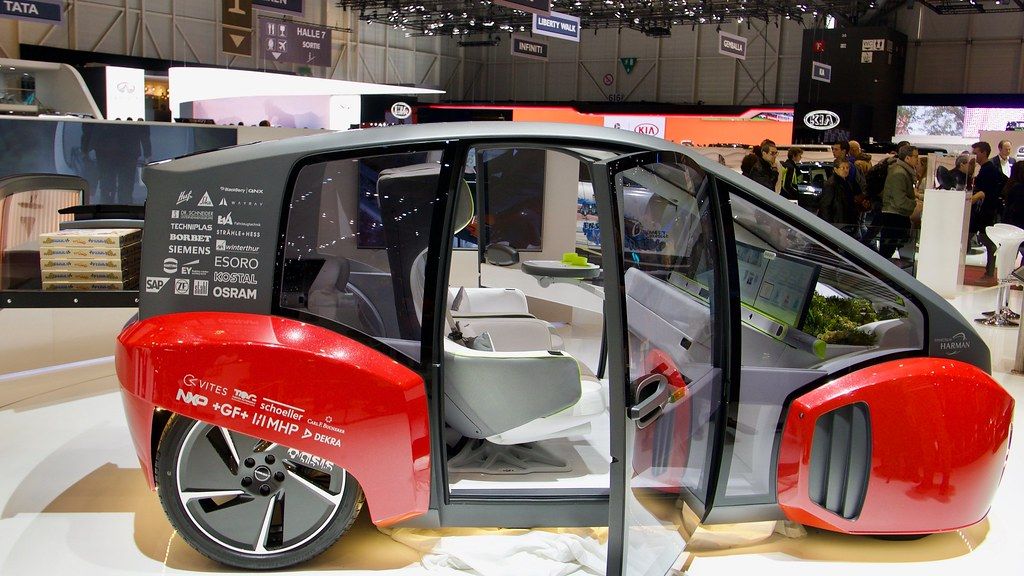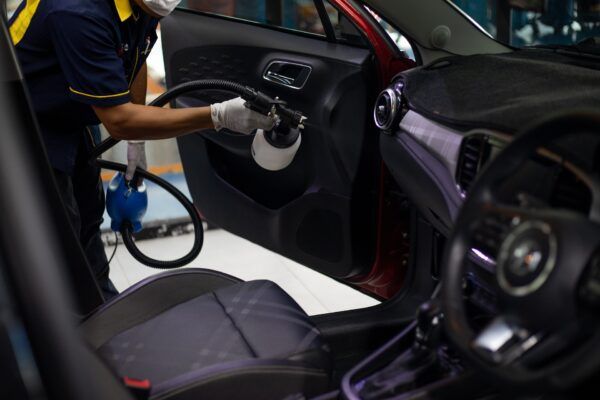
The automotive market is a landscape of constant innovation and appealing promises, with manufacturers regularly introducing vehicles designed to capture the imagination and meet diverse needs. From sleek sedans to rugged SUVs and family-friendly minivans, the choices are abundant, often making the car buying process an exciting, albeit significant, financial undertaking. However, the allure of a new or used vehicle can sometimes mask underlying issues that only surface after the purchase, leading to what many owners describe as a profound sense of buyer’s remorse.
Investing thousands of dollars, or committing to a multi-year loan, on a vehicle that ultimately fails to meet expectations is a frustrating experience shared by many. The initial appeal of exterior aesthetics or advertised specifications can be misleading, prompting consumers to make decisions that they later wish they could reverse. To navigate this complex market successfully, it becomes crucial for prospective buyers to look beyond the marketing hype and learn from the experiences of others. Understanding common pitfalls can save significant time, money, and emotional distress.
This comprehensive guide aims to shed light on vehicles that have consistently fallen short of owner expectations, transforming initial excitement into regret. By presenting factual information and owner complaints, derived exclusively from expert analysis and consumer feedback, we provide actionable insights to help you make informed purchasing decisions. Our focus is on the specific mechanical, performance, and reliability issues that have led many drivers to express a desire to “unacquire” these particular rides, ensuring you are well-equipped to avoid similar disappointments.
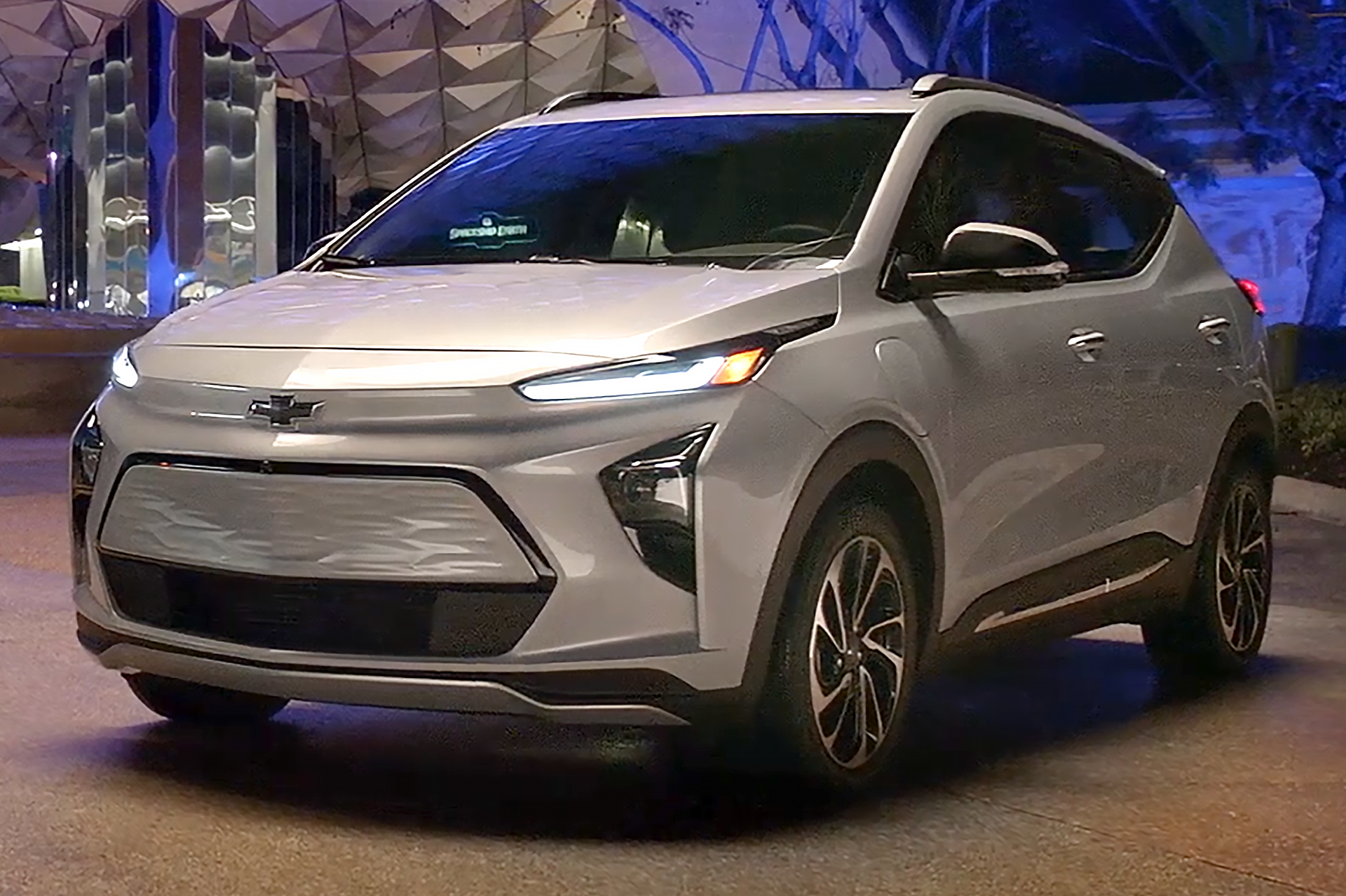
1. **Chevrolet Bolt**General Motors’ Chevrolet Bolt, while initially praised for its affordability and a respectable range, has unfortunately been plagued by significant problems that have diminished its appeal among owners. The most notorious issue revolves around the Bolt’s lithium-ion batteries, which were found to be susceptible to short-circuiting, overheating, and even igniting into flames. This severe safety concern led to extensive and costly recalls in both 2020 and 2021, directly impacting owner confidence and the vehicle’s reputation.
The root cause of these battery-related fires was traced back to LG-manufactured components, necessitating widespread battery pack replacements in affected models. Such a critical flaw not only posed a serious risk to vehicle occupants but also imposed considerable inconvenience on owners who had to deal with the recall process and the associated downtime. The presence of a fundamental safety defect of this magnitude is a primary driver of regret for many who invested in the Bolt, turning an eco-friendly choice into a source of constant worry.
Beyond the critical battery issue, the Chevrolet Bolt also faced other notable criticisms that contributed to owner dissatisfaction. Reports frequently highlighted its “so-so” ride quality, indicating a lack of comfort and refinement that one might expect from a modern electric vehicle. Furthermore, the space available for rear passengers was often deemed inadequate, making it less practical for families or regular use with multiple occupants. The vehicle’s handling characteristics also received mixed reviews, described by many as unremarkable and failing to offer an engaging or particularly responsive driving experience. These combined factors collectively eroded the initial promise of the Chevrolet Bolt, making it a frequent entry on lists of cars owners wish they had never purchased.
Car Model Information: 2023 Chevrolet Bolt EUV FWD Premier
Name: Chevrolet Bolt EV
Caption: 2022 Chevrolet Bolt EV
Manufacturer: General Motors
Production: unbulleted list
ModelYears: unbulleted list
Class: Subcompact car
BodyStyle: hatchback
Layout: Front-engine, front-wheel-drive layout
Predecessor: Chevrolet Spark EV
Categories: 2020s cars, All Wikipedia articles in need of updating, All articles containing potentially dated statements, All articles with unsourced statements, Articles containing potentially dated statements from February 2018
Summary: The Chevrolet Bolt EV (marketed in Europe as Opel Ampera-e) is a battery electric subcompact hatchback manufactured and marketed by General Motors under its Chevrolet brand from late 2016 until late 2023, with a brief hiatus between mid-2021 and early 2022.
The first-generation Bolt was developed and manufactured with LG Corporation. Sales of the 2017 Bolt began in California in December 2016; it was released nationwide and international markets release in 2017. A rebadged European variant was marketed as the Opel Ampera-e in mainland Europe. In 2017, the Bolt was the second-best-selling plug-in car in the United States. It was named the 2017 Motor Trend Car of the Year, the 2017 North American Car of the Year, an Automobile magazine 2017 All Star, and was listed in Time magazine’s Best 25 Inventions of 2016. The Ampera-e was discontinued after 2018. By the end of 2020, GM had sold 112,000 Bolt and Ampera-e cars worldwide. The first-generation Bolt had been subject to at least three recalls due to battery fire risks.
In mid-2023, GM officials said they would discontinue the Bolt; after outcry, they announced plans for a next-generation model, which is expected to be revealed in 2025 for model year 2026.
Get more information about: Chevrolet Bolt
Buying a high-performing used car >>>
Brand: Chevrolet Model: Bolt
Price: $23,999 Mileage: 28,546 mi.
Read more about: 12 Cars That Made Drivers Say ‘Nope, Not Again!’ – Your Ultimate Guide to Avoiding Instant Regret on Wheels
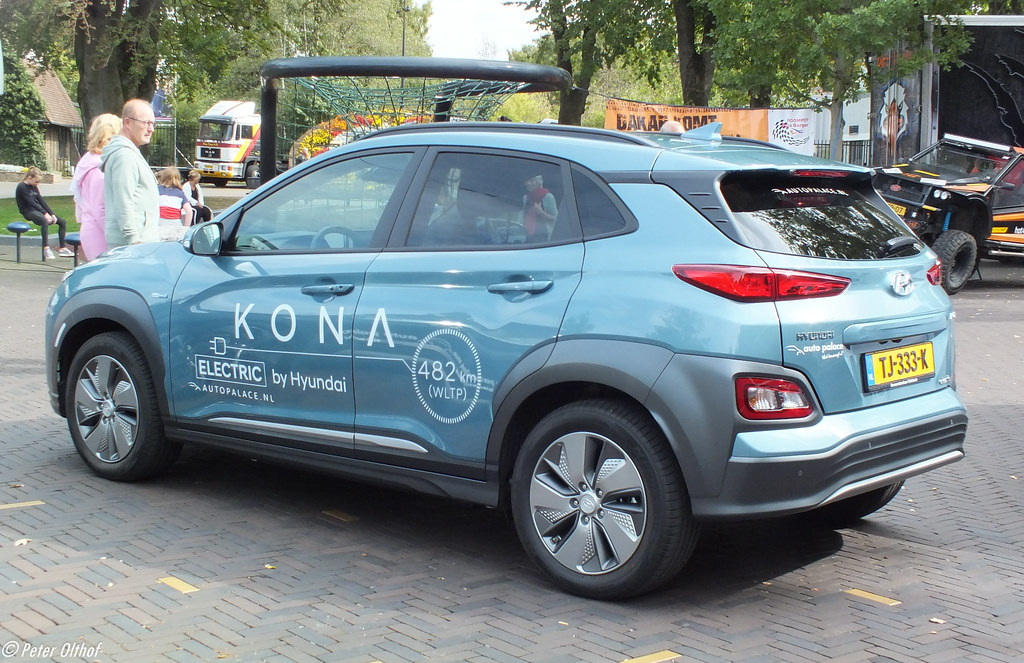
2. **Hyundai Kona Electric**Hyundai has generally garnered positive attention for its electric vehicle offerings, yet the Kona Electric stands out as a significant exception, earning a place among models owners regret buying. Similar to the Chevrolet Bolt, the Hyundai Kona Electric has a troubled history marked by battery fires and subsequent recalls, undermining its potential as an appealing EV. This issue prompted a worldwide recall in 2020 and 2021, aimed at mitigating fire risks through the replacement of affected battery packs.
The occurrence of battery-related fires in any electric vehicle is a serious concern, raising questions about safety and reliability that can be difficult for a brand to overcome. For owners of the Kona Electric, facing a recall for a fundamental safety component like the battery can lead to significant anxiety and distrust in the vehicle’s long-term dependability. This critical flaw is a major contributor to buyer’s remorse, as the promised benefits of electric mobility are overshadowed by safety hazards and the inconvenience of repairs.
However, the battery issues were, for many owners, “just the tip of the iceberg” when it came to disappointments with the Hyundai Kona Electric. While the context doesn’t elaborate extensively on other specific problems, the strong warning “Buyer beware!” indicates that a broader range of reliability concerns likely affected owner satisfaction. When a vehicle suffers from both critical safety defects and other undisclosed issues, the financial and emotional investment can quickly feel misguided.
Owners who purchased the Kona Electric, drawn by its electric powertrain and Hyundai’s general reputation, often found themselves confronting a litany of problems that made the ownership experience less than ideal. The combination of serious safety recalls and unspecified, yet significant, additional issues has cemented the Kona Electric’s position as a vehicle that many wish they could un-buy. It serves as a cautionary tale about thoroughly researching a vehicle’s full history, not just its initial specifications.
Car Model Information: 2019 Cadillac Escalade Platinum
Name: Hyundai Kona
Caption: Hyundai Kona N Line (SX2)
Manufacturer: Hyundai Motor Company
Aka: Hyundai Kauai (Portugal)
Production: 2017–present
ModelYears: 2018–present
Class: Subcompact crossover SUV
BodyStyle: SUV
Layout: ubl
Categories: 2020s cars, All-wheel-drive vehicles, All Wikipedia articles in need of updating, Articles containing Chinese-language text, Articles containing Korean-language text
Summary: The Hyundai Kona (Korean: 현대 코나) is a subcompact crossover SUV produced by the South Korean manufacturer Hyundai. The first-generation Kona debuted in June 2017 and the production version was revealed later that year. It is positioned between the Venue or Bayon and the Tucson in Hyundai crossover SUV line-up. The battery electric version called the Kona Electric (or Kona EV) was first launched in South Korea during the first half of 2018 and rolled out gradually worldwide afterwards.
Get more information about: Hyundai Kona
Buying a high-performing used car >>>
Brand: Hyundai Model: Kona Electric
Price: $37,811 Mileage: 84,091 mi.
Read more about: 12 Cars That Made Drivers Say ‘Nope, Not Again!’ – Your Ultimate Guide to Avoiding Instant Regret on Wheels
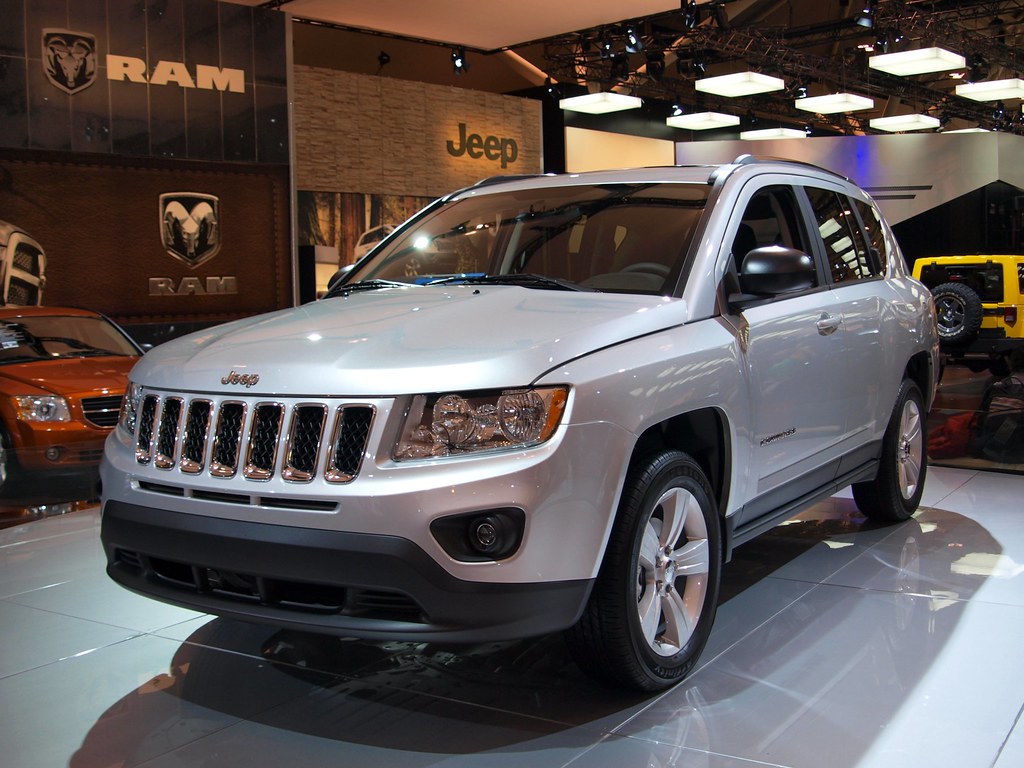
3. **Jeep Compass**The Jeep Compass, marketed as a compact SUV, has unfortunately been a source of considerable frustration and “migraine headache[s] on wheels” for numerous owners across various model years. One of the most frequently cited and critical issues involves its transmission systems, specifically the continuously variable transmission (CVT) and the 9-speed automatic transmissions. Owners have reported experiencing “herky-jerky shifting” and, in severe cases, “catastrophic failure,” pointing to fundamental design or manufacturing flaws.
Transmission problems are particularly debilitating for vehicle owners, often leading to expensive repairs and prolonged downtime. The inability of a vehicle to shift smoothly or, worse, suffering complete transmission failure, fundamentally compromises its drivability and reliability. Such significant mechanical failures are a primary reason why the Jeep Compass frequently appears on lists of regrettable purchases, as they directly impact the vehicle’s core function and necessitate significant investment in repairs. The cost and inconvenience of addressing these issues often far outweigh the initial appeal of the vehicle.
Beyond the pervasive transmission issues, the Jeep Compass has also been criticized for several other performance and reliability shortcomings. Owners have reported “poor engine performance,” suggesting that the vehicle struggles to deliver adequate power or responsiveness for daily driving needs. This can manifest as sluggish acceleration or difficulty maintaining speed, diminishing the overall driving experience and making the vehicle feel underpowered compared to its competitors. Such performance deficiencies are particularly disappointing in an SUV.
Furthermore, complaints of “excessive oil consumption” point to potential engine health issues, which can lead to increased maintenance costs and concerns about the engine’s longevity. “Electrical system issues” are another common problem, often resulting in frustrating malfunctions of various components, from infotainment to essential operational features. Collectively, these recurring and significant problems paint a clear picture of why many Jeep Compass owners would “steer clear” of this SUV if given the chance to rewind their purchase decision.
Car Model Information: 2019 Jeep Wrangler Sport S
Name: Jeep Compass
Caption: 2019 Jeep Compass
Manufacturer: Jeep
Production: 2006–present
ModelYears: 2007–present
Class: Compact crossover SUV
BodyStyle: SUV
Layout: Front-engine, front-wheel-drive layout
Chassis: Unibody
Categories: 2010s cars, 2020s cars, All-wheel-drive vehicles, All Wikipedia articles written in American English, Articles with short description
Summary: The Jeep Compass is a compact crossover SUV, introduced in 2006 for the 2007 model year. The first generation Compass and Patriot, its rebadged variant, were among Jeep’s first crossover SUVs. The second-generation Compass debuted in September 2016 in Brazil and at the Los Angeles International Auto Show in November 2016, sharing a modified platform with the Renegade. It is positioned between the smaller Renegade and the larger Cherokee globally or the Commander in South America. The third-generation Compass debuted in May 2025, built on the STLA Medium by Stellantis, shared with other PSA Groupe vehicles.
Get more information about: Jeep Compass
Buying a high-performing used car >>>
Brand: Jeep Model: Compass
Price: $24,082 Mileage: 52,780 mi.
Read more about: 12 Cars That Made Drivers Say ‘Nope, Not Again!’ – Your Ultimate Guide to Avoiding Instant Regret on Wheels
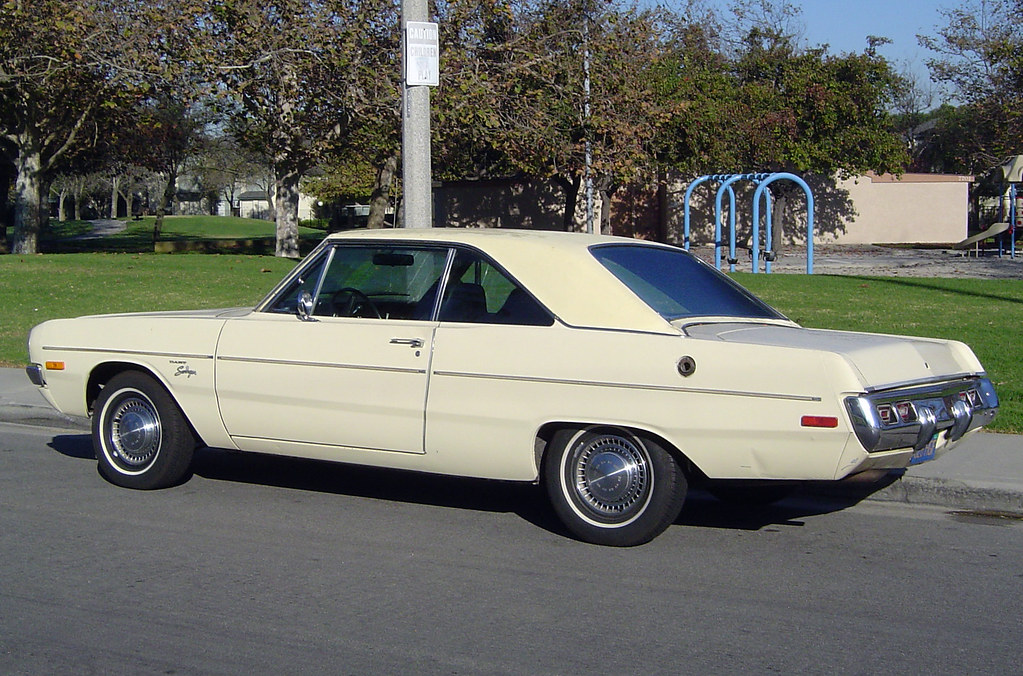
4. **Dodge Dart**The Dodge Dart, a compact sedan, earned a reputation for having “full-size car problems,” becoming a consistent source of buyer’s remorse for a substantial portion of its owners. The vehicle was plagued by a wide array of issues that affected nearly every major system, from the powertrain to the chassis. Owners frequently expressed dissatisfaction across the board, including with the transmission, engine, suspension, and brakes, making it a comprehensively problematic vehicle.
The depth and breadth of these complaints are particularly striking, indicating that the Dart suffered from systemic reliability shortcomings rather than isolated defects. When multiple critical components are identified as problematic, it signals a vehicle that struggles with overall quality and engineering execution. This widespread unreliability is a key factor in the high levels of owner dissatisfaction and the strong sentiment of regret associated with the Dodge Dart, as it undermines the fundamental promise of a dependable car.
Confirming the extent of this buyer’s remorse, Consumer Reports noted that “around six in 10 buyers say they are not satisfied with the vehicle.” This statistic underscores the significant proportion of owners who wished they had never purchased the Dodge Dart. Such a high dissatisfaction rate is a powerful indicator of a vehicle that fundamentally failed to meet consumer expectations for reliability, performance, and overall ownership experience. It speaks volumes about the challenges faced by owners.
The issues encountered by Dart owners often led to frequent and costly repairs, transforming what should have been a straightforward compact sedan into a financial drain and a constant source of frustration. From unexpected breakdowns to recurring maintenance problems, the Dodge Dart consistently disappointed its drivers. For many, the desire to “unacquire” this particular model stemmed from a realization that its problems far outweighed its initial appeal or purported value, solidifying its place as a regrettable automotive choice.
Car Model Information: 1972 Dodge Dart Swinger
Name: Dodge Dart
Caption: 1966 Dodge Dart GT 2-door hardtop
Manufacturer: Dodge
Production: 1959–1976 (US market)
ModelYears: 1960–1976 (US market)
Class: Full-size
Layout: FR layout
Predecessor: Dodge Coronet#Fourth generation (1957–1959)
Related: Plymouth Valiant,Chrysler Valiant,Dodge Phoenix
Successor: Dodge Aspen,Dodge Diplomat,Talbot Tagora
Categories: 1970s cars, All articles with unsourced statements, Articles with short description, Articles with unsourced statements from December 2023, Articles with unsourced statements from May 2025
Summary: The Dodge Dart is a line of passenger cars produced by Dodge from the 1959 to 1976 model years in North America, with production extended to later years in various other markets.
The production Dodge Dart was introduced as a lower-priced full-size model in 1960 and 1961, but became a mid-size car for one model year for 1962, and was then reduced to a compact for two generations, from 1963 to 1976.
Chrysler had first used ‘Dart’ name plates on two Italian styled show cars, in 1956 and 1957, before it became a Dodge model name. The Dart nameplate was resurrected for a Fiat-derived compact car that was introduced in 2012.
Get more information about: Dodge Dart
Buying a high-performing used car >>>
Brand: Dodge Model: Dart
Price: $18,250 Mileage: 40,424 mi.
Read more about: 12 Cars That Made Drivers Say ‘Nope, Not Again!’ – Your Ultimate Guide to Avoiding Instant Regret on Wheels

5. **Dodge Grand Caravan**The Dodge Grand Caravan holds a unique place in the automotive landscape, serving as a family hauler for many over the years, yet for a significant number of owners, the memories associated with it are far from fond. Despite its utility, the minivan has been anything but a “smooth driving” experience, primarily due to persistent and debilitating transmission problems that have been a common complaint from owners. This issue severely undermines the reliability of the vehicle as a family, pet, and cargo transporter, a role for which it is specifically designed.
The transmission problems in the Grand Caravan were often preceded by a series of worrying symptoms before they would “go kaput.” Owners reported experiencing “delayed gear engagement,” where the vehicle hesitated to shift into the correct gear, leading to jerky and unpredictable acceleration. Additionally, “rough shifting” and “slipping” were frequently cited issues, indicating a transmission that struggled to operate efficiently or smoothly, which can be particularly concerning when transporting loved ones and heavy loads.
Beyond the critical transmission failures, the Dodge Grand Caravan also presented owners with a range of other frustrating problems. “Electrical system problems” were another common complaint, leading to malfunctions with various vehicle components, from power windows to infotainment systems, further detracting from the user experience. These electrical glitches can be notoriously difficult and expensive to diagnose and repair, adding to the burden of ownership and contributing to buyer’s remorse.
Furthermore, many owners reported “heavy oil consumption,” a sign of potential engine wear or design flaws that can lead to increased maintenance costs and concerns about the engine’s long-term health. The cumulative effect of these significant and recurring issues – from transmission breakdowns to electrical woes and excessive oil use – led many Grand Caravan owners to express a strong desire to “rewind time and have a do-over,” opting for a different vehicle given the chance.
Car Model Information: 2021 Volkswagen Atlas 2.0T SE
Caption: 2011 Dodge Grand Caravan Mainstreet
Name: Dodge Grand Caravan
Manufacturer: Chrysler Corporation,Daimler AG,Chrysler LLC,Chrysler Group LLC,FCA US LLC
Class: Minivan
Layout: FF layout,F4 layout
Production: November 2, 1983 –August 21, 2020
ModelYears: 1984–2020
Related: Plymouth Voyager,Chrysler Town & Country (minivan),Dodge Mini Ram,Chrysler Voyager,Volkswagen Routan
Assembly: Windsor, Ontario,Fenton, Missouri,Fenton, Missouri,Fuzhou
Successor: Dodge Journey,Chrysler Voyager
Categories: All-wheel-drive vehicles, All articles with unsourced statements, Articles with short description, Articles with unsourced statements from December 2017, Articles with unsourced statements from May 2009
Summary: The Dodge Caravan is a series of minivans manufactured by Chrysler from the 1984 through 2020 model years. The Dodge version of the Chrysler minivans, was marketed as both a passenger van and a cargo van (the only version of the model line offered in the latter configuration). For 1987, the model line was joined by the long-wheelbase Dodge Grand Caravan. Produced in five generations across 36 model years, the Dodge Caravan is the second longest-lived Dodge nameplate (exceeded only by the Dodge Charger). Initially marketed as the Dodge counterpart of the Plymouth Voyager, the Caravan was later slotted between the Voyager and the Chrysler Town & Country. Following the demise of Plymouth, the model line became the lowest-price Chrysler minivan, ultimately slotted below the Chrysler Pacifica.
Sold primarily in the United States and Canada, the Dodge Caravan was also marketed in Europe and other international markets under the Chrysler brand (as the Chrysler Voyager or Chrysler Caravan). From 2008 onward, Dodge marketed the model line only as the Grand Caravan; Ram Trucks sold a cargo-only version of the model line as the Ram C/V Tradesman. The model line was also rebranded as the Volkswagen Routan from 2009 through 2014.
After the 2020 model year, the Dodge Grand Caravan was discontinued, ending production on August 21, 2020. For 2021 production, the Grand Caravan nameplate was moved to Chrysler, which used it for a Canadian-market version of the Chrysler Pacifica (in the United States, the exact vehicle was marketed as the Chrysler Voyager).
For its entire production run, the Dodge Caravan/Grand Caravan was manufactured by Chrysler Canada (now Stellantis Canada) at its Windsor Assembly facility (Windsor, Ontario). From 1987 until 2007, the model line was also manufactured by Chrysler at its Saint Louis Assembly facility (Fenton, Missouri). Since their introduction in late 1983, over 14.6 million Chrysler minivans have been sold worldwide (including export versions and versions sold through rebranding).
Get more information about: Dodge Caravan
Buying a high-performing used car >>>
Brand: Dodge Model: Grand Caravan
Price: $25,919 Mileage: 49,076 mi.
Read more about: 12 Cars That Made Drivers Say ‘Nope, Not Again!’ – Your Ultimate Guide to Avoiding Instant Regret on Wheels

6. **Nissan Sentra**The Nissan Sentra, while having some model years that were generally well-received, also includes a period marked by what owners describe as “horrific” reliability issues, specifically for models manufactured from 2013 to 2019. The central culprit behind much of this dissatisfaction was the vehicle’s “infamous CVT” (continuously variable transmission), which proved to be a persistent “thorn in the side of many Sentra owners.” This component’s widespread issues greatly impacted the vehicle’s reputation.
The problems associated with the CVT in these Sentra models were extensive and varied. Owners frequently reported issues such as “overheating,” which can severely impact the transmission’s longevity and performance, often leading to premature failure. “Jerky acceleration” and “shuddering” were also common complaints, indicating that the transmission struggled to deliver smooth power delivery, resulting in an uncomfortable and unpredictable driving experience. These operational flaws severely diminished the driving pleasure and reliability of the vehicle.
In addition to the pervasive CVT issues, the Nissan Sentra from these model years suffered from a “laundry list of issues” that further compounded owner regret. “Engine stalling” was among the reported problems, a critical safety and reliability concern that can leave drivers stranded or in dangerous situations. A car that stalls unexpectedly is a significant source of frustration and anxiety, directly contributing to a poor ownership experience that undermines confidence in the vehicle.
Furthermore, the vehicle was subject to “many recalls related to the vehicle’s airbags, seatbelts, brakes, and more.” While recalls are intended to rectify safety defects, a high number of recalls across critical safety systems suggests underlying quality control issues and places a burden on owners to address these fixes. The combination of chronic transmission problems, engine stalling, and numerous safety recalls made the Nissan Sentra from 2013-2019 a deeply regrettable purchase for many consumers.
Car Model Information: 2021 Nissan Sentra SV
Name: Nissan Sentra
Caption: 2021 Nissan Sentra SR (B18; Canada)
Manufacturer: Nissan
Aka: Nissan Sunny
Production: 1982–present
Class: Subcompact car
Predecessor: Nissan Sunny#B310
Categories: 1990s cars, 2000s cars, 2010s cars, 2020s cars, All Wikipedia articles written in American English
Summary: The Nissan Sentra is a series of automobiles manufactured by the Japanese automaker Nissan since 1982. Since 1999, the Sentra has been categorized as a compact car, while previously it occupied the subcompact class. Until 2006, Sentra was a rebadged export version of the Japanese Nissan Sunny, but since the 2013 model year, Sentra is a rebadged export version of the Sylphy. The Sentra nameplate is not used in Japan. Many other countries in Latin America sell their versions of the Sunny as the Sentra. In Mexico, the first three generations of the Sentra were known as the Nissan Tsuru (Japanese for crane), and the B13 model was sold under that name until 2017, alongside the updated models badged as Sentra.
In North America, the Sentra currently serves as Nissan’s compact car, despite being rated as a mid-size car by the EPA due to its interior volume since the 2007 model year. While previous Sentras were subcompacts, the Sentra has grown over the years, with the Nissan Versa having replaced the Sentra in the entry-level area.
The Sentra name was created for Nissan by Ira Bachrach of NameLab, and Bachrach describes the origin as “Nissan wanted consumers to understand that it was quite safe even though it was small. The word Sentra sounds like central as well as sentry, which evokes images of safety.”
Get more information about: Nissan Sentra
Buying a high-performing used car >>>
Brand: Nissan Model: Sentra
Price: $17,961 Mileage: 63,553 mi.
Read more about: 12 Cars That Made Drivers Say ‘Nope, Not Again!’ – Your Ultimate Guide to Avoiding Instant Regret on Wheels
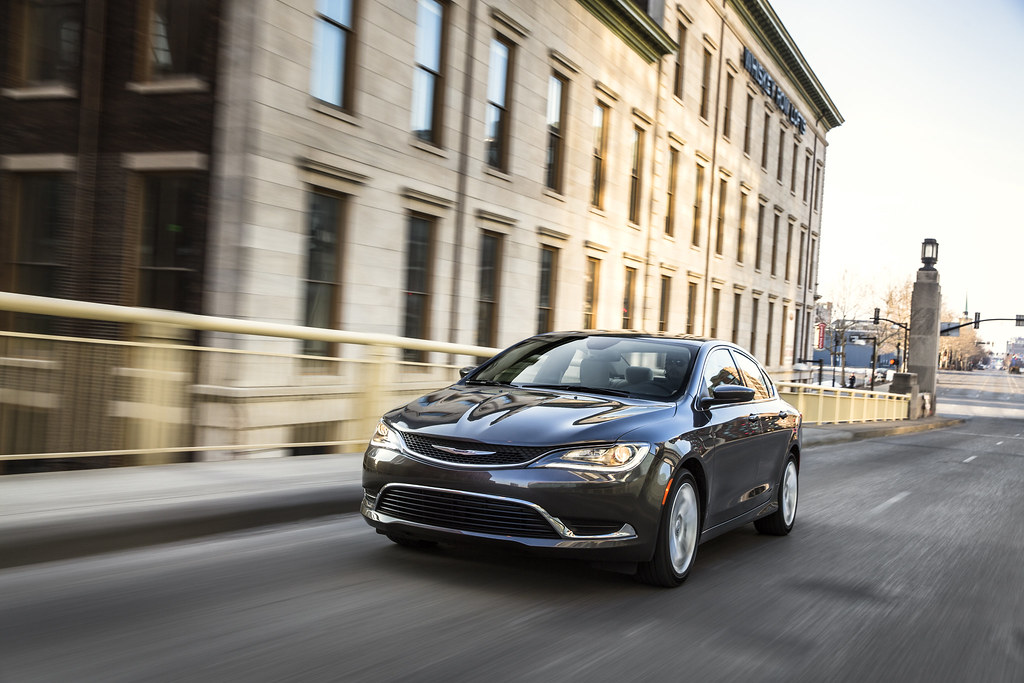
7. **Chrysler 200**Manufactured between 2011 and 2017, the Chrysler 200 is widely recognized for its “many reliability issues,” making it another frequent entry on lists of vehicles owners wish they had never purchased. A particular point of contention for owners of the 2015, 2016, and 2017 models was the 9-speed automatic transmission, which proved to be “especially problematic.” This transmission was a constant source of frustration, often exhibiting operational flaws that compromised the vehicle’s drivability and overall performance.
The issues with the 9-speed automatic transmission were not merely minor annoyances; for many, “transmission failure was a thing, too.” This indicates that the problems escalated beyond rough shifting or poor performance, leading to complete breakdowns that required costly and extensive repairs. A major component like the transmission failing prematurely is a significant financial burden and a source of extreme inconvenience, fundamentally eroding trust in the vehicle’s quality and durability over time.
These transmission problems were, as the context states, “just for starters,” implying that the vehicle’s reliability woes extended beyond this critical component. The Chrysler 200 also “suffers from engine performance problems,” which can manifest in various ways, such as reduced power, poor fuel efficiency, or rough operation. Engine issues, combined with severe transmission defects, create a double whammy of mechanical unreliability that is difficult for owners to overlook, leading to constant trips to the service center.
The accumulation of such fundamental and costly mechanical problems—specifically, a problematic transmission that frequently failed and recurring engine performance issues—transformed the Chrysler 200 into a source of considerable regret for many of its buyers. The vehicle’s inability to deliver consistent, dependable performance meant that the ownership experience was often characterized by trips to the service center and unexpected repair bills, making it a clear candidate for an “unacquisition” wish list among disgruntled owners.
Car Model Information: 2015 Chrysler 200 S
Name: Chrysler 200
Manufacturer: Chrysler
Production: 2010–2016
ModelYears: 2011–2017
Assembly: Sterling Heights, Michigan
Class: Mid-size car
Sp: us
Predecessor: Chrysler Sebring
Categories: 2010s cars, All articles with dead external links, All articles with unsourced statements, Articles with dead external links from July 2020, Articles with permanently dead external links
Summary: The Chrysler 200 is a mid-size sedan that was manufactured and marketed by Chrysler from model years 2011 to 2017 across two generations in four-door sedan and two-door convertible (first generation only) body styles.
The 200 nameplate debuted on the 200C, a prototype hybrid vehicle shown at the 2009 North American International Auto Show in Detroit and based on the Chrysler 300. The 200C concept was engineered to accept either traditional gasoline, hybrid or full-electric powertrains.
Get more information about: Chrysler 200
Buying a high-performing used car >>>
Brand: Chrysler Model: 200
Price: $7,200 Mileage: 122,275 mi.
Read more about: 12 Cars That Made Drivers Say ‘Nope, Not Again!’ – Your Ultimate Guide to Avoiding Instant Regret on Wheels
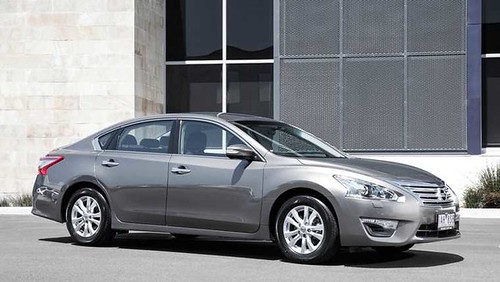
8. **Nissan Altima**Another vehicle that consistently surfaces on lists of owner regret is the Nissan Altima, particularly models produced between 2013 and 2019. A primary source of dissatisfaction stems from its continuously variable transmission (CVT). This transmission type, while designed for fuel efficiency, has been repeatedly cited for operational issues and a lack of refinement, significantly detracting from the driving experience for many owners.
Beyond the problematic CVT, which often generates a “droning noise during acceleration” that many drivers find irritating, the Altima has also been noted for other mechanical shortcomings. These include persistent problems with the steering system, which can impact handling precision and driver confidence. Such issues contribute to an overall sense of a vehicle that fails to deliver a consistently smooth or reliable ride, undermining the daily commute for its owners.
Furthermore, the Altima has been reported to suffer from excessive oil consumption and oil leaks, indicating potential engine health issues that can lead to increased maintenance costs and concerns about the vehicle’s longevity. These problems, combined with documented instances of the Altima’s “braking performance” consistently underperforming in testing—requiring longer stopping distances than many competitors—raise significant questions about the vehicle’s long-term reliability and safety. Owners also frequently report that the infotainment system feels dated and unresponsive compared to rivals, further eroding the ownership experience.
While the Altima may initially appeal with its perceived value and features, the accumulation of these mechanical and operational flaws often leads to significant buyer’s remorse. Prospective buyers are advised to consider these widespread reliability concerns, particularly regarding the CVT and other vital systems, when evaluating this model for purchase. The frustration of ongoing issues often outweighs any initial savings.
Car Model Information: 2015 Nissan Altima 2.5 S
Name: Nissan Altima
Caption: 2024 Nissan Altima SR (L34; US)
Manufacturer: Nissan
Aka: Nissan Bluebird
Production: 1992–present
Class: Compact car
Predecessor: Nissan Bluebird,Nissan Stanza
ModelYears: 1993–present
Categories: 2000s cars, 2010s cars, 2020s cars, All-wheel-drive vehicles, All Wikipedia articles written in American English
Summary: The Nissan Altima is a mid-size car manufactured by Nissan since 1992. It is a continuation of the Nissan Bluebird line, which began in 1955.
The Altima has historically been larger, more powerful, and more luxurious than the Nissan Sentra but less so than the Nissan Maxima. The first through fourth-generation cars were manufactured exclusively in the United States and officially sold in North and South America, along with the Middle East and Australia. For other markets, Nissan sold a related mid-size sedan called the Nissan Teana which was between the Altima and Maxima in terms of size. In 2013, the Teana became a rebadged version of the fifth-generation Altima.
The name “Altima” was originally applied to a top trim line of the Nissan Leopard for the Japanese market in 1986, and then to the Nissan Laurel Altima mid-size car sold in Central America and the Caribbean before 1992. In 1992, Nissan discontinued the Stanza which was a Nissan Bluebird clone, replacing it with the US-built Altima, while remaining a compact car. The first Altima was produced in June 1992, as a 1993 model. All Altima models for the North American market were built in Smyrna, Tennessee, until June 2004, when Nissan’s Canton, Mississippi plant also began producing the model to meet high demand.
Get more information about: Nissan Altima
Buying a high-performing used car >>>
Brand: Nissan Model: Altima
Price: $8,235 Mileage: 117,517 mi.
Read more about: 12 Cars That Made Drivers Say ‘Nope, Not Again!’ – Your Ultimate Guide to Avoiding Instant Regret on Wheels
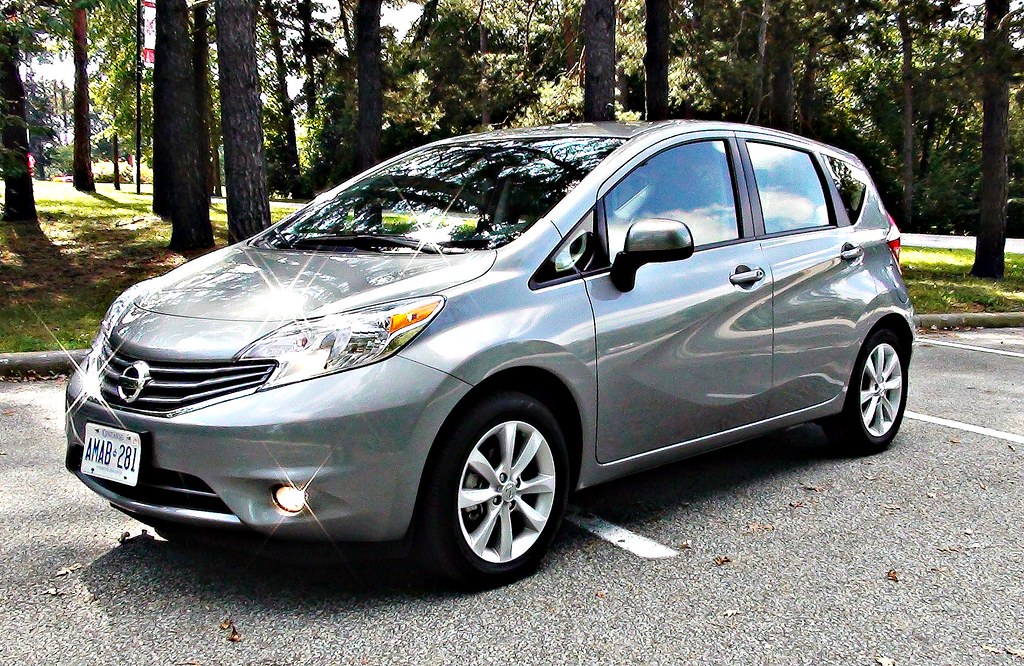
9. **Nissan Versa Note**The Nissan Versa Note, marketed as an “super-cheap small hatchback,” frequently presents a stark example of the adage ‘you get what you pay for.’ While its low entry price might be appealing to budget-conscious buyers, this affordability often directly correlates with a lower perceived quality level, leading to significant owner dissatisfaction. The trade-off for a reduced initial cost often manifests in a compromised ownership experience.
A central point of contention for Versa Note owners is its continuously variable transmission (CVT). Similar to other Nissan models of its era, this transmission has been a source of immense frustration, failing to deliver the smooth, efficient operation expected by drivers. Issues with the CVT often translate into an unrefined and unpredictable driving feel, detracting from the vehicle’s everyday usability and reliability, a critical aspect for any car.
Adding to the vehicle’s shortcomings is its powertrain, specifically the “anemic acceleration from the 1.6-liter 4-cylinder engine.” This lack of power can make highway merging and uphill climbs a struggle, diminishing driver confidence and making the vehicle feel underpowered in many common driving scenarios. For many owners, the combination of a problematic transmission and a weak engine creates an overall underwhelming and regrettable driving experience, highlighting the importance of looking beyond just the sticker price.
Car Model Information: 2021 Volkswagen Atlas 2.0T SE
Categories: All set index articles, Articles with short description, CS1 Mexican Spanish-language sources (es-mx), CS1 Portuguese-language sources (pt), CS1 Spanish-language sources (es)
Summary: Nissan Versa is an automobile nameplate used by the Japanese manufacturer Nissan in the Americas for the following models:
According to a Nissan press release in 2008, “versa” is short for “versatile space” meant to imply the spaciousness of the interior and configurable cargo arrangements. The Versa is one of the few remaining subcompact cars left on sale in the North American market, with most automakers dropping small cars from their lineups to focus on crossovers and SUVs.
Get more information about: Nissan Versa
Buying a high-performing used car >>>
Brand: Nissan Model: Versa Note
Price: $25,919 Mileage: 49,076 mi.
Read more about: 12 Cars That Made Drivers Say ‘Nope, Not Again!’ – Your Ultimate Guide to Avoiding Instant Regret on Wheels
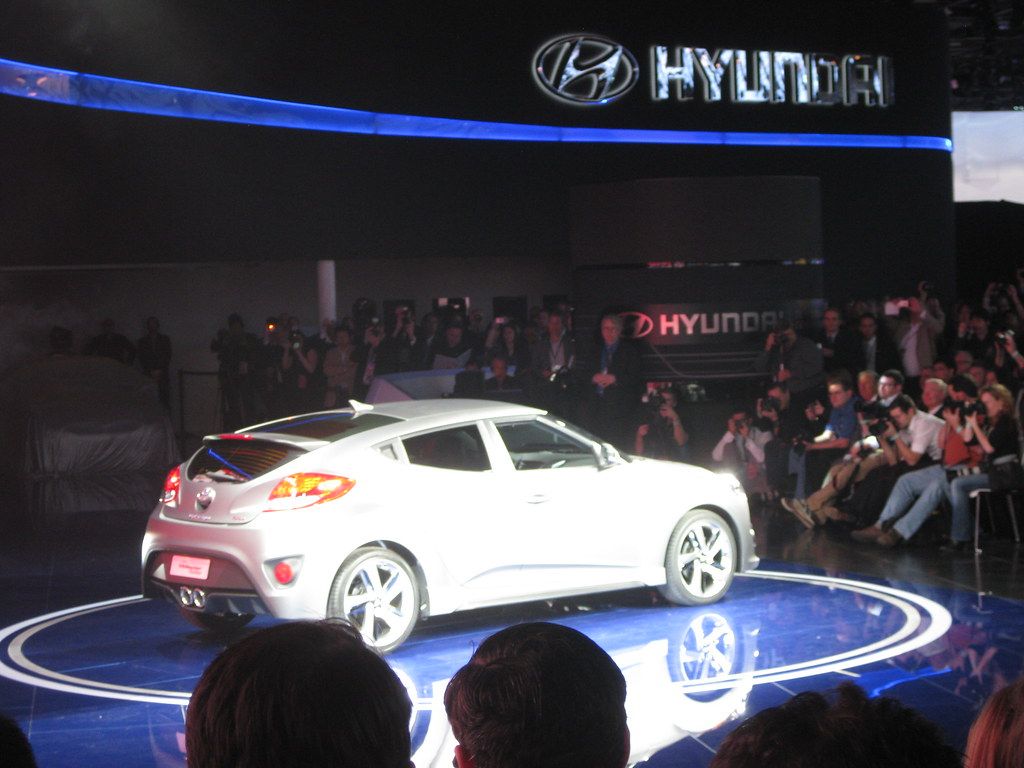
10. **Hyundai Veloster**The Hyundai Veloster, with its distinctive three-door design and “cool-looking” styling, certainly captured attention upon its release, promising a blend of unique aesthetics and responsive handling. However, for many owners, this initial appeal quickly faded as a range of significant mechanical and reliability problems became apparent. The vehicle’s visual distinctiveness often overshadowed underlying issues that led to considerable regret.
A primary concern among Veloster owners revolves around its engine. Reports indicate that these engines are susceptible to various issues, including instances that can lead to “catastrophic failure.” Such a severe problem represents a major financial burden and a significant safety risk, profoundly impacting owner confidence and the vehicle’s long-term viability. The specter of a complete engine breakdown is a powerful driver of buyer’s remorse.
Further compounding the Veloster’s reliability woes is its dual-clutch transmission. Owners frequently report a litany of issues with this component, including “delayed acceleration,” a feeling of “slipping” during shifts, and “jerky shifts.” These operational flaws not only diminish the driving pleasure but also raise concerns about the transmission’s durability and consistent performance. A transmission that struggles to perform its basic function can quickly turn an otherwise engaging car into a frustrating one.
Beyond the critical engine and transmission problems, the Hyundai Veloster has also been cited for issues with its suspension and steering systems. These additional mechanical concerns contribute to a less refined ride quality and potentially compromised handling, further solidifying its position as a vehicle that, despite its initial stylistic charm, often fails to deliver a dependable and satisfying ownership experience. The cumulative effect of these problems often leads owners to wish they had chosen a different vehicle.
Car Model Information: 2012 Hyundai Veloster Base
Name: Hyundai Veloster
Manufacturer: Hyundai Motor Company
Production: 2011–2022
Class: Sport compact car
Layout: Front-engine, front-wheel-drive layout
BodyStyle: hatchback
Predecessor: Hyundai Tiburon
ModelYears: 2012–2022
Assembly: Ulsan
Categories: All Wikipedia articles in need of updating, All articles with unsourced statements, Articles containing Korean-language text, Articles with short description, Articles with unsourced statements from May 2018
Summary: The Hyundai Veloster (Korean: 현대 벨로스터, romanized: Hyeondae Belloseuteo) is a compact car first produced in 2011 by Hyundai, with sales beginning in South Korea on March 10, 2011, and in Canada and the United States since the fall of 2011. In South Korea, it was marketed under Hyundai’s ‘Premium Youth Lab’. It was unveiled on January 10, 2011, at the Detroit Auto Show, and fills the void left when Hyundai discontinued the Hyundai Tiburon after the 2008 model year.
The car differs from most other hatchbacks with its asymmetrical door configuration, featuring one large door on the driver side and two smaller doors on the passenger side. This configuration is more common on commercial vehicles and minivans.
Get more information about: Hyundai Veloster
Buying a high-performing used car >>>
Brand: Hyundai Model: Veloster
Price: $7,950 Mileage: 83,462 mi.
Read more about: 12 Cars That Made Drivers Say ‘Nope, Not Again!’ – Your Ultimate Guide to Avoiding Instant Regret on Wheels
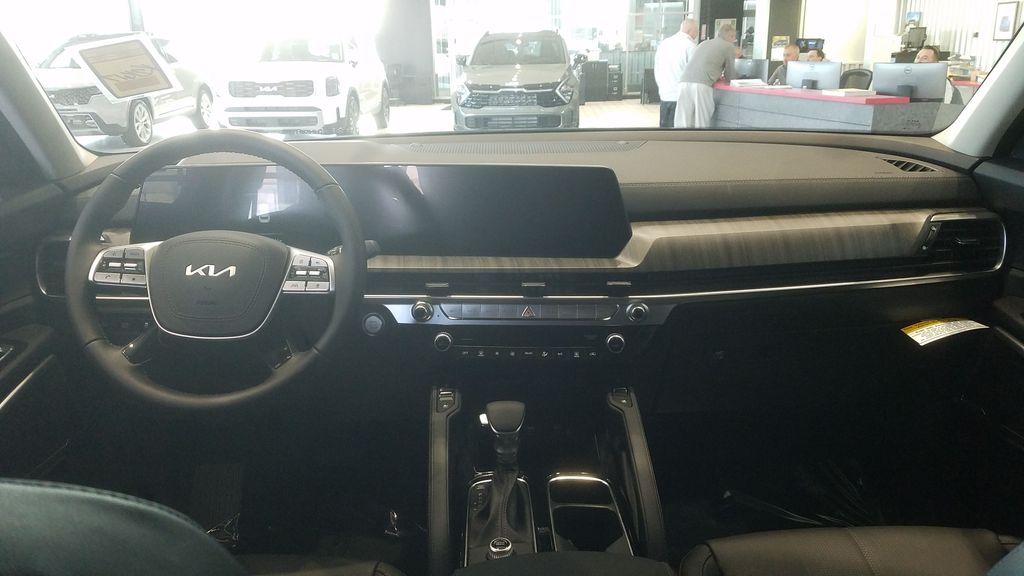
11. **Kia Rio**The Kia Rio, often lauded for its affordability and fuel efficiency, has unfortunately become equally known for a range of issues that lead to considerable buyer’s remorse among its owners. While these attributes are typically strong selling points, the Rio’s drawbacks have frequently overshadowed its practical benefits, causing a significant portion of buyers to regret their purchase. The initial cost savings are often negated by subsequent problems.
Chief among the complaints are the vehicle’s engine issues. Owners commonly report experiencing “rough idling” and “misfires,” problems often traced back to issues with essential components such as spark plugs or ignition coils. These engine problems can lead to diminished performance, increased fuel consumption, and the inconvenience of frequent service visits, transforming an economical car into a source of ongoing frustration and unexpected expenses.
Beyond the engine, the Kia Rio also draws criticism for its interior quality and overall comfort. Owners frequently lament the “cheap interior quality,” noting that the materials feel substandard and do not hold up well over time. This, coupled with consistent complaints about “comfort issues,” suggests that the vehicle fails to provide a pleasant or ergonomic environment for occupants, particularly on longer journeys. The perceived lack of interior refinement further contributes to owner dissatisfaction, as the daily experience of driving the car falls short of expectations.
The combination of persistent engine troubles and a less-than-satisfactory interior environment ultimately undermines the Kia Rio’s appeal, despite its attractive price point. For consumers prioritizing long-term satisfaction and reliability alongside initial cost, the widespread reports of these issues indicate that the Rio may not deliver on the promise of a truly economical and dependable ownership experience.
Car Model Information: 2023 Kia Rio S
Name: Kia Rio
Caption: Fourth generation Kia Rio
Manufacturer: Kia
Aka: Kia Pride (2005–2017),Kia K2 (China; 2011–2020)
Production: November 1999 – December 2023
ModelYears: 2001–2023 (North America)
BodyStyle: hatchback
Class: Subcompact car
Layout: Front-engine, front-wheel-drive layout
Predecessor: Kia Pride,Kia Avella
Successor: Kia K3 (BL7)
Categories: 2000s cars, 2010s cars, Articles containing Korean-language text, Articles with short description, CS1 Croatian-language sources (hr)
Summary: The Kia Rio (Korean: 기아 리오) is a subcompact car manufactured by Kia from 1999 to 2023. Body styles have included a three and five-door hatchback and four-door sedan, equipped with inline-four gasoline and diesel engines, and front-wheel drive.
The Rio replaced the first generation Pride—a rebadged version of the Ford Festiva—and the Avella, a subcompact sold as a Ford in some markets. A second generation was introduced in 2005 in Europe and in 2006 in North America, sharing its platform with the Hyundai Accent, a subcompact manufactured by its sister Hyundai Motor Company in South Korea.
In August 2023, the K3 was introduced as its successor in several markets such as Mexico and the GCC countries.
Get more information about: Kia Rio
Buying a high-performing used car >>>
Brand: Kia Model: Rio
Price: $17,218 Mileage: 22,509 mi.
Read more about: 12 Cars That Made Drivers Say ‘Nope, Not Again!’ – Your Ultimate Guide to Avoiding Instant Regret on Wheels
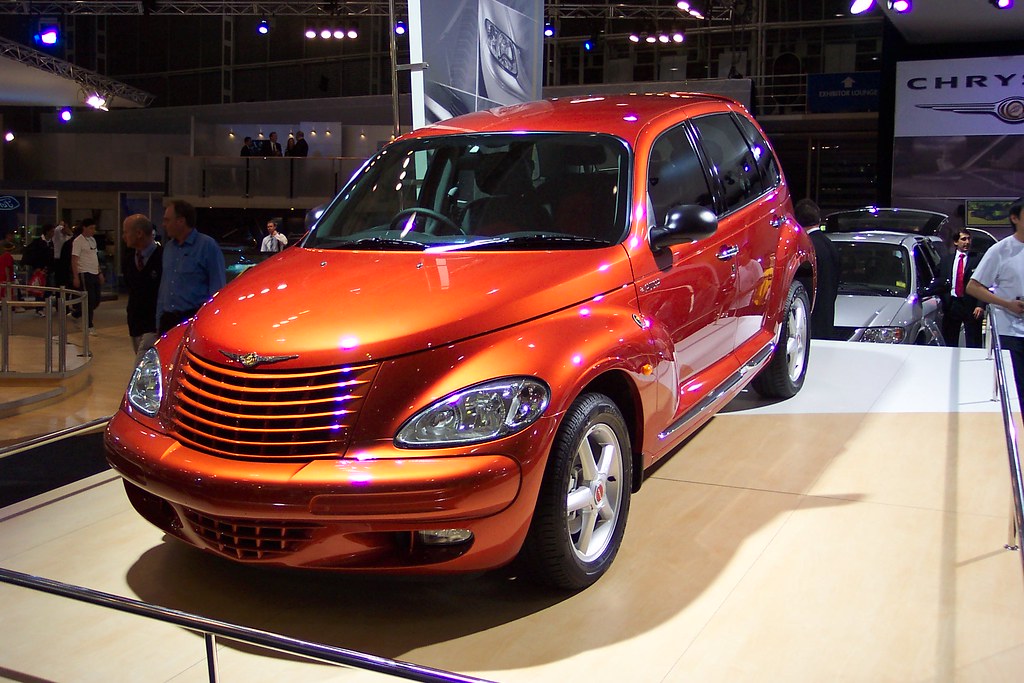
12. **Chrysler PT Cruiser**The Chrysler PT Cruiser occupies a unique space in automotive history, primarily recognized for its distinctive “retro style” that tends to evoke strong, often polarized, opinions—people either “love or hate” its aesthetic. However, for many owners, the vehicle’s appearance proved to be the least of their concerns, as the PT Cruiser became notorious for a host of significant mechanical problems that consistently led to profound buyer’s remorse. The charm of its design rarely compensated for its operational failings.
Indeed, the PT Cruiser was plagued by “engine issues galore,” encompassing a wide spectrum of critical faults. Owners frequently reported problems ranging from “stalling” and “rough idling” to more severe issues such as “overheating” and “head gasket failure.” These engine-related failures are not merely inconvenient; they represent fundamental reliability concerns that can lead to costly repairs, significant downtime, and a constant state of anxiety for drivers regarding their vehicle’s dependability.
In addition to its pervasive engine troubles, the PT Cruiser also suffered from widespread transmission and electrical problems. Transmission issues often compromise the vehicle’s drivability and can lead to expensive component replacements, while electrical system malfunctions can affect anything from minor accessories to critical operational features. The cumulative impact of these various defects across multiple vital systems left many owners grappling with a vehicle that was a constant source of frustration and unexpected expense.
For those who purchased the Chrysler PT Cruiser, the blend of chronic engine, transmission, and electrical issues made the ownership experience far from ideal. Despite its unique styling, the frequent breakdowns and high repair costs often led owners to regret their decision, underscoring the importance of prioritizing mechanical soundness over distinctive design when making a vehicle purchase. The desire to “unacquire” this model became a common sentiment among its drivers.
Car Model Information: 2021 Volkswagen Atlas 2.0T SE
Name: Chrysler PT Cruiser
Manufacturer: Chrysler
ModelCode: PT,PG
Production: 2000–2010
ModelYears: 2001–2010
Assembly: Toluca, Mexico State
Designer: Bryan Nesbitt
Class: Compact car
BodyStyle: convertible
Platform: Chrysler PT platform
Related: Dodge SRT4,Dodge Neon
Predecessor: Dodge Neon
Successor: Lancia Delta#Third generation
Layout: Front-engine, front-wheel-drive layout
Engine: ubl
Transmission: Ultradrive#40TE
Wheelbase: 103 in
Abbr: on
Length: 168.8 in
Width: 67.1 in
Height: 63 in
Weight: 3123 lb
Categories: 2010s cars, All articles with unsourced statements, Articles with short description, Articles with unsourced statements from March 2018, Cars discontinued in 2010
Summary: The Chrysler PT Cruiser is a compact car that was built by the American company Chrysler from 2001 until 2010. Introduced as a five-door hatchback wagon, a two-door convertible variant was also made from 2005 until 2008.
Originally planned as a Plymouth model, the PT Cruiser was ultimately marketed as a Chrysler when Plymouth was discontinued. Intended to invoke 1930s aesthetics, the exterior of the PT Cruiser was designed by Bryan Nesbitt. The model received an intermediate facelift for the 2006 model year. Interior packaging was noted for its high roof, high h-point seating, and flexible cargo and passenger configurations enabled by a multi-level rear cargo shelf and rear seats a user could fold, tumble, or remove.
The PT Cruiser was produced in Mexico and Austria at the Toluca Car Assembly and Eurostar Automobilwerk factories respectively. By the end of production in July 2010, worldwide production had reached 1.35 million.
In its nameplate, PT stands for “Personal Transport” or “Personal Transportation”. PT was the PT Cruiser’s product code for the Mexican-made units.
Get more information about: Chrysler PT Cruiser
Buying a high-performing used car >>>
Brand: Chrysler Model: PT Cruiser
Price: $25,919 Mileage: 49,076 mi.
Read more about: 12 Cars That Made Drivers Say ‘Nope, Not Again!’ – Your Ultimate Guide to Avoiding Instant Regret on Wheels
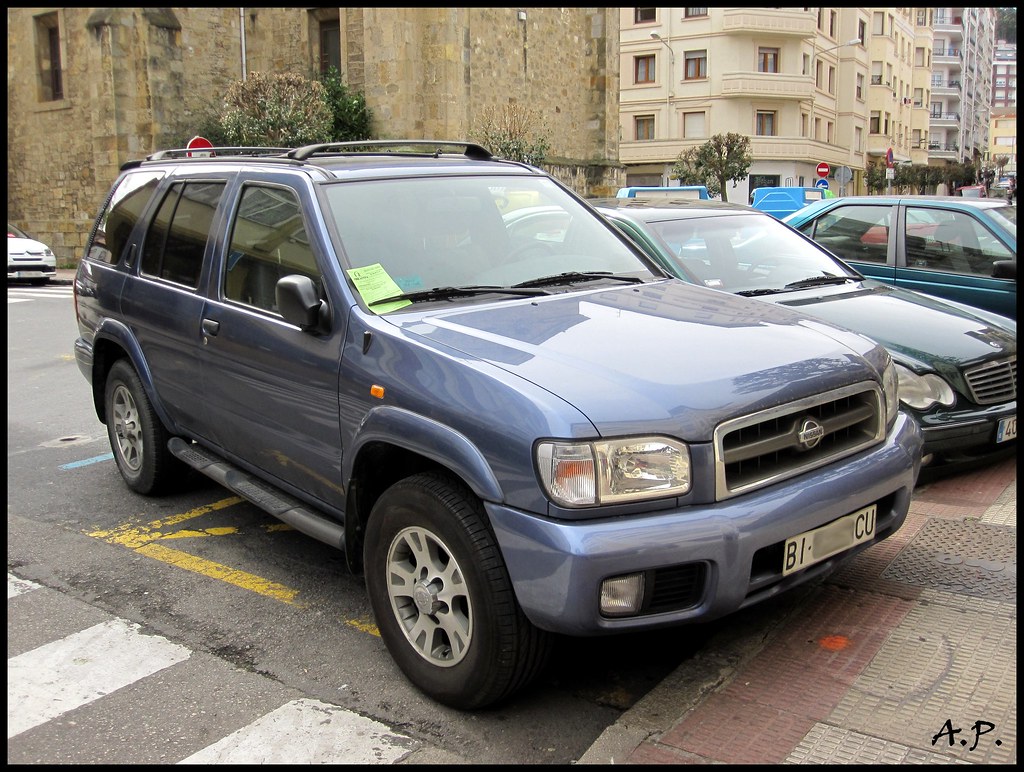
13. **Nissan Pathfinder**Despite its popularity as an SUV, the Nissan Pathfinder has a history of problems that have consistently led to owners regretting their purchase decisions. The vehicle, while often appealing for its size and utility, has struggled with reliability issues that undermine the trust and satisfaction of its drivers. The allure of its capabilities often gives way to frustration over persistent mechanical flaws.
A recurring and significant point of contention for Pathfinder owners is the continuously variable transmission (CVT)—a component that has plagued multiple Nissan models. Owners frequently report a range of issues with this transmission, including “rough shifting,” unsettling “shuddering,” and even “overheating.” These problems severely impact the vehicle’s drivability and its long-term reliability, often necessitating costly interventions.
In some particularly frustrating cases, owners have had to contend with the complete “replace[ment] the transmission,” a repair that represents a substantial financial burden and a major inconvenience. Such critical failures highlight a fundamental design or manufacturing flaw that compromises the vehicle’s core function. The frequency of these transmission-related issues is a primary driver of regret among Pathfinder owners, as it directly impacts the vehicle’s dependability.
Beyond the pervasive CVT problems, the Nissan Pathfinder has also been cited for “engine issues” and “fuel system problems.” These additional mechanical and operational concerns further contribute to an overall pattern of unreliability, creating a vehicle ownership experience characterized by frequent repairs and unexpected costs. For many, the accumulated issues transform a once-promising SUV into a regrettable investment, solidifying its place among vehicles that owners wish they had never purchased.
Car Model Information: 2023 Nissan Pathfinder SL
Name: Nissan Pathfinder
Caption: 2022 Nissan Pathfinder Platinum 4WD (R53, US)
Manufacturer: Nissan
Production: 1985–present
ModelYears: unbulleted list
Layout: unbulleted list
Class: unbulleted list
Chassis: unbulleted list
Predecessor: unbulleted list
Successor: unbulleted list
Categories: 1990s cars, 2000s cars, 2010s cars, 2020s cars, All-wheel-drive vehicles
Summary: The Nissan Pathfinder is a range of sport utility vehicles manufactured by Nissan since 1985. Until the third-generation model, the Pathfinder is based on Nissan’s compact pickup truck platform which it shares with the Navara/Frontier.
The Pathfinder was marketed as the Nissan Terrano (Japanese: 日産・テラノ, Hepburn: Nissan Terano) outside North America. Beginning in 2004, the vehicles were marketed globally as the Pathfinder.
In 2012, the R52 series Pathfinder was released as a three-row crossover SUV based on the unibody Nissan D platform, moving away from the body-on-frame chassis format. The role of a mid-size body-on-frame SUV in Nissan’s global lineup was passed to the Terra/X-Terra, which was released in 2018 and based on the D23 series Navara.
Get more information about: Nissan Pathfinder
Buying a high-performing used car >>>
Brand: Nissan Model: Pathfinder
Price: $33,900 Mileage: 18,055 mi.
Read more about: 11 SUVs That Promise Adventure But Deliver Owners Immediate Regret
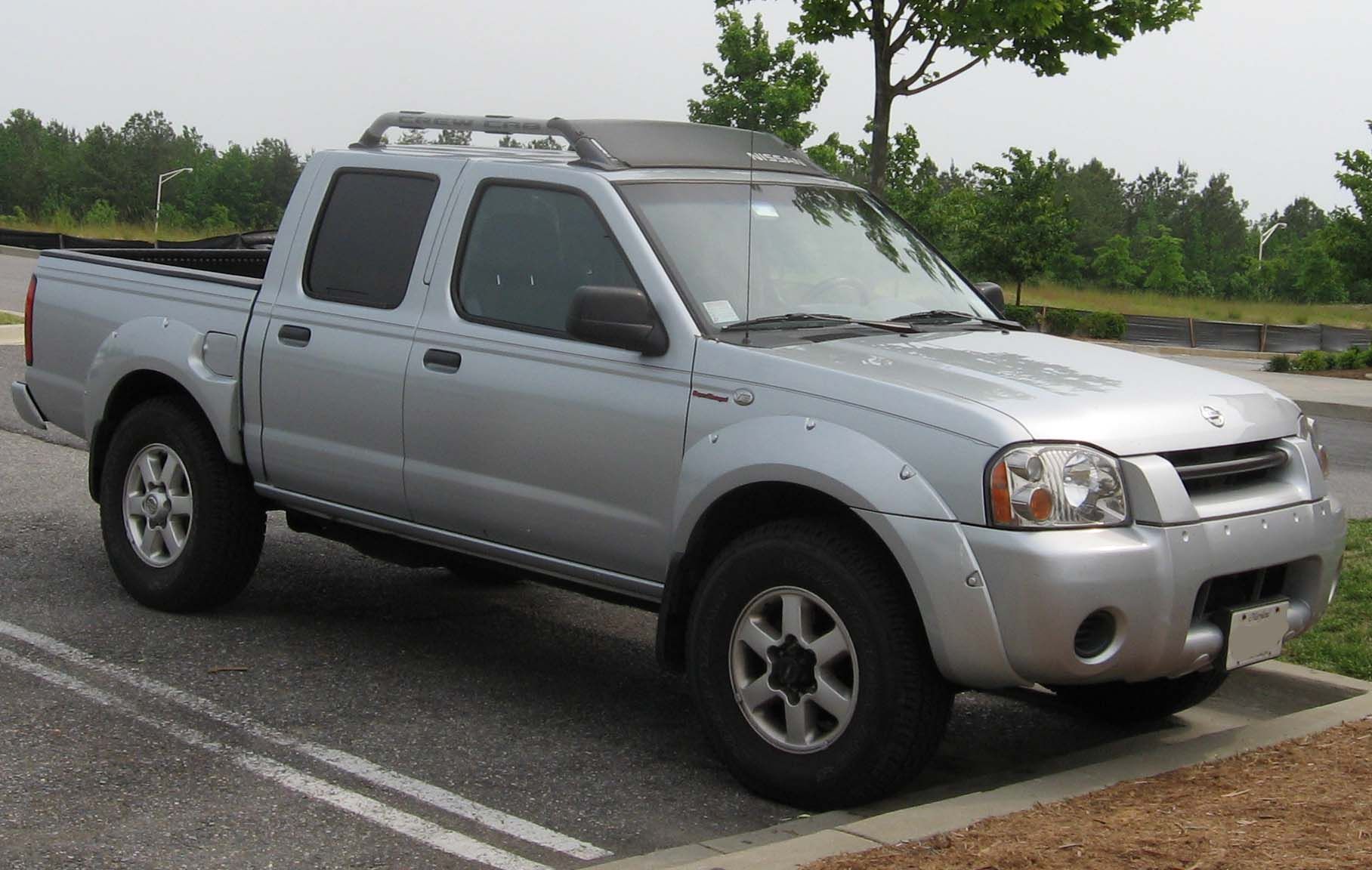
14. **Nissan Frontier**The Nissan Frontier, a mid-size pickup truck, has garnered a reputation for a specific and highly problematic issue in certain model years, leading many owners to express deep regret. Specifically, models manufactured between 2005 and 2010 are “notorious for transmission issues,” which significantly impacted the vehicle’s reliability and overall ownership experience. This period represents a critical cautionary tale for prospective buyers.
The root cause of these severe transmission problems during these model years was a design flaw involving the radiator, which was prone to “leak[ing] coolant into the transmissions.” This cross-contamination of fluids led to a cascade of mechanical failures within the transmission system. The ingress of coolant into the transmission fluid compromised its lubrication properties and internal components, resulting in serious operational defects.
The direct consequences of this coolant leak were varied and severe. Owners experienced “slipping gears,” where the transmission failed to maintain consistent engagement; “herky-jerky shifting,” indicating erratic and unrefined gear changes; and ultimately, widespread “transmission failure.” These issues not only made the truck difficult and unpredictable to drive but also necessitated extremely expensive and extensive repairs, often requiring complete transmission replacement.
Beyond these well-documented transmission catastrophes, the Nissan Frontier of these model years also presented owners with “engine and timing chain issues.” These additional problems further compounded the truck’s reliability shortcomings, adding to the financial and emotional burden of ownership. The combination of notorious transmission defects and other significant mechanical faults has made the Nissan Frontier (2005-2010) a consistent entry on lists of vehicles that owners would unequivocally choose to “unacquire” if given the chance to reverse their purchase decision.
Car Model Information: 2014 Nissan Frontier S
Categories: All set index articles, Articles with short description, Nissan vehicles, Set index articles on cars, Short description is different from Wikidata
Summary: The Nissan Frontier is a nameplate used on three different pickup truck models by Nissan:
Nissan Frontier (international), an alternative nameplate for the NP300/Navara on some markets
Nissan Frontier (North America), a rebadged NP300/Navara from 1997 to 2021, then became a separate model since 2021
Nissan Frontier Pro, a rebadged Dongfeng Z9 PHEV that will be available from 2025.
Get more information about: Nissan Frontier
Buying a high-performing used car >>>
Brand: Nissan Model: Frontier
Price: $13,435 Mileage: 131,197 mi.
Read more about: 11 SUVs That Promise Adventure But Deliver Owners Immediate Regret
Understanding the experiences of past owners is a powerful tool in navigating the complex automotive market. The vehicles detailed in this comprehensive analysis, while varied in segment and design, share a common thread: they have consistently failed to meet critical expectations for reliability, performance, or overall ownership value. From persistent transmission failures to chronic engine problems and electrical glitches, these models highlight the potential pitfalls that can transform an exciting purchase into a source of enduring frustration and financial drain. By meticulously researching these common issues and prioritizing proven dependability, consumers can equip themselves to make choices that lead to lasting satisfaction, rather than regret.” , “_words_section2”: “1994

